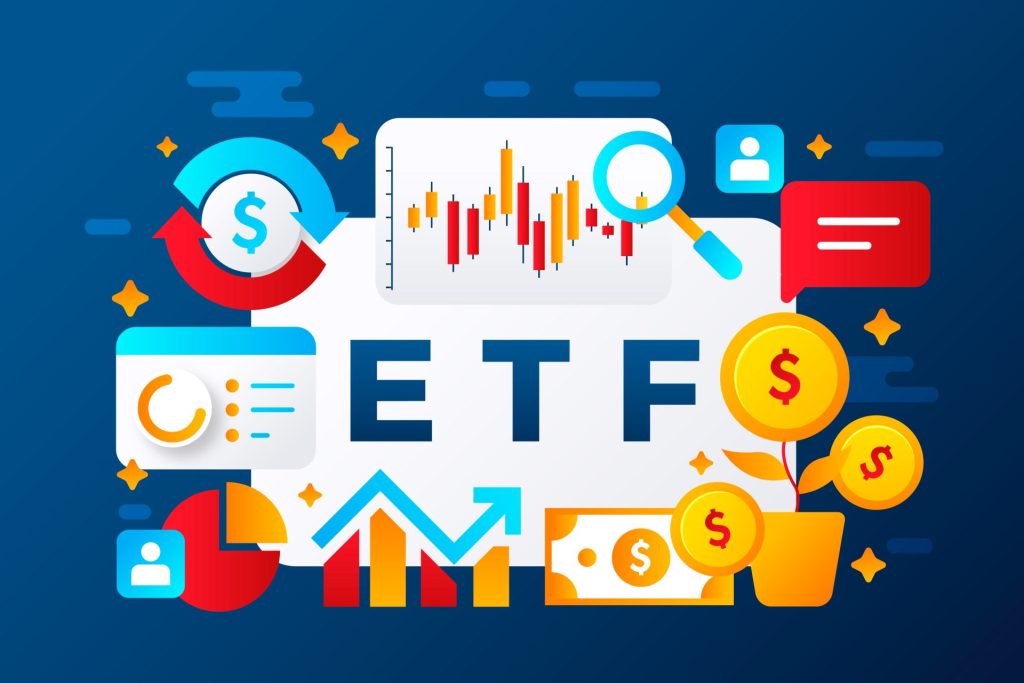
What Is a Leveraged ETF and Should You Be Trading It
If you’ve spent any time on the internet reading about trading strategies or watching finance influencers, chances are you’ve come across the term leveraged ETF. These financial instruments are everywhere from Reddit forums to trading apps but they’re often misunderstood or misused. So let’s break it down in plain English without jargon or fluff.
First Things First: What’s an ETF?
An ETF is a type of fund that trades on stock exchanges just like individual shares. The acronym stands for exchange traded fund. At its core an ETF is a basket of assets such as stocks, bonds, commodities, or a mix packaged into a single tradable unit.
Most traditional ETFs are built to track the performance of a specific index. For example, if you buy an S&P 500 ETF, you’re buying tiny pieces of all 500 companies in the index. It’s like getting a sampler plate instead of ordering one dish.
Why people love ETFs
Diversification You’re not betting everything on one company
Liquidity You can buy and sell them quickly during market hours
Low cost Management fees are often minimal compared to mutual funds
Types of ETFs
There are all sorts of ETFs out there
Index ETFs track popular indices like the S&P 500 or Nasdaq
Sector ETFs focus on specific industries like tech, energy, or healthcare
Inverse ETFs aim to go up when the market or a sector goes down
And then there’s our topic of the day
What Makes an ETF “Leveraged”
Leveraged ETFs are like ETFs with a turbo button. They’re designed to amplify the daily returns of an index usually by 2 or 3 times. If the index goes up 1 percent in a day, a 2x leveraged ETF aims to go up 2 percent. Simple idea right
But how do they do that They use derivatives which include futures contracts, swaps, and options. These are tools that allow the ETF to bet more money than it actually holds magnifying gains and losses.
One key rule These funds reset daily. Every single day they rebalance their portfolios to maintain that 2x or 3x exposure. This daily reset is crucial and often misunderstood.
How It Works in Real Life
Say you buy a 2x leveraged ETF tracking the S&P 500. If the index rises 1 percent today, your ETF should rise 2 percent. But here’s the catch. If the market moves up and down in a choppy way, the compounding effect can eat into your returns. This is what traders call volatility drag.
In a steady trend leveraged ETFs can be gold. In a sideways or jumpy market they can quietly bleed value even if the index ends up flat.
The Inner Workings
Leveraged ETFs are constantly in motion behind the scenes. They use futures contracts and swaps to maintain leverage. Each day the fund manager rebalances the portfolio to reset exposure. This daily rebalancing is what makes short term tracking work but also what makes long term holding dangerous.
Why Some Traders Love Them
Amplified gains If you’re confident about a short term move a leveraged ETF can double or triple your return
No margin accounts needed You can access leverage without borrowing money or getting into complex contracts
Tactical use Perfect for short term trades reacting to earnings news or sudden momentum
The Risks You Can’t Ignore
Let’s be blunt. These products are not made for holding long term. Most people who try that get burned.
Volatility decay Compounding in unpredictable markets can erode returns fast
Tracking errors You might expect a 20 percent gain after ten 1 percent up days but what you actually get might surprise you
Liquidity issues Some leveraged ETFs are thinly traded leading to wider spreads and slippage
Why Traders Use Them Anyway
Quick bets You want to ride a wave without committing tons of cash
Short term hedging You think the market’s about to drop and want a buffer without selling your long term positions
Fast access No margin calls No loan interest No complicated paperwork
What the Regulators Say
Bodies like the SEC and FINRA have issued several warnings. These are not beginner tools. They’re not for retirement accounts or casual investors. If you don’t fully understand how they work you probably shouldn’t be touching them.